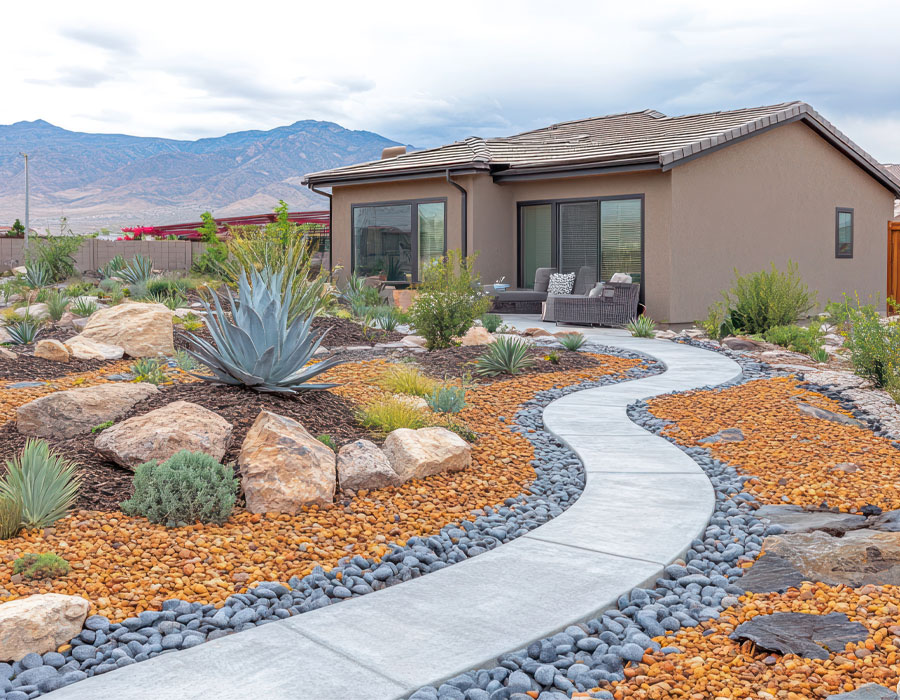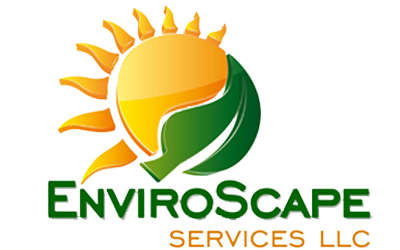Frequently Asked Questions
What are the maintenance differences between stamped concrete and natural stone walkways?
The maintenance differences between stamped concrete and natural stone walkways are significant. Stamped concrete requires periodic sealing and is generally easier to clean, while natural stone may need more frequent repairs and sealing due to its porous nature and susceptibility to staining.
How does the cost of stamped concrete compare to standard concrete walkways?
The cost of stamped concrete is generally higher than that of standard concrete walkways due to the additional materials and labor involved in the stamping and finishing processes. However, the enhanced aesthetic appeal and durability often justify the investment.
How do the aesthetic options of stamped concrete compare to natural stone walkways?
The aesthetic options of stamped concrete offer a versatile range of designs, colors, and textures that can mimic the look of natural stone walkways. While natural stone provides unique, organic beauty, stamped concrete can be customized to achieve similar appearances at a more affordable price.
Which is more cost effective, natural stone or stamped concrete walkways?
The cost-effectiveness of natural stone versus stamped concrete walkways varies. Generally, stamped concrete is more affordable, offering a similar aesthetic at a lower price point, while natural stone can be more expensive due to material and installation costs.
How do outdoor tiles for walkways compare to stamped concrete in aesthetic appeal?
The aesthetic appeal of outdoor tiles for walkways and stamped concrete varies significantly. Outdoor tiles offer a wide range of colors and patterns, allowing for intricate designs, while stamped concrete can mimic natural materials, providing a seamless and elegant look suitable for various styles.
How well do concrete stamped walkways hold up?
Concrete stamped walkways are highly durable and can withstand various weather conditions, making them an excellent choice for outdoor spaces. With proper installation and maintenance, they can last for many years without significant wear or damage.
How do costs of stamped concrete walkways differ from other decorative options?
The costs of stamped concrete walkways typically differ from other decorative options due to their durability and low maintenance requirements, often providing a more cost-effective solution over time compared to materials like pavers or natural stone.
What are the aesthetic differences between brick and stamped concrete walkways?
The aesthetic differences between brick and stamped concrete walkways are significant. Brick offers a classic, timeless look with natural variations in color and texture, while stamped concrete can mimic various materials and designs, providing greater versatility and customization options.
What are the benefits of stamped concrete walkways?
The benefits of stamped concrete walkways include enhanced aesthetic appeal, durability, and low maintenance. They can mimic natural materials, withstand harsh weather, and provide a long-lasting solution for stylish outdoor spaces.
How long do stamped concrete walkways last?
Stamped concrete walkways can last 25 to 30 years or more with proper maintenance. Their durability makes them an excellent choice for enhancing outdoor spaces while providing long-lasting functionality.
Can stamped concrete withstand harsh weather conditions?
Stamped concrete can withstand harsh weather conditions due to its durability and resistance to cracking. Properly installed and sealed, it remains functional and visually appealing even in extreme temperatures and heavy rainfall, making it an excellent choice for outdoor spaces in Arizona.
What colors are available for stamped concrete?
The colors available for stamped concrete are diverse, ranging from earthy tones like browns and grays to vibrant shades such as reds and blues, allowing for a customized look that complements your outdoor space beautifully.
How is stamped concrete installed effectively?
Effective installation of stamped concrete involves preparing the site, pouring a concrete base, applying color and stamping patterns, and sealing the surface to enhance durability and appearance. Proper timing and technique are crucial for achieving the desired finish.
What maintenance is required for stamped concrete?
The maintenance required for stamped concrete includes regular cleaning with a mild detergent and water, sealing every 1-3 years to protect against stains and wear, and promptly addressing any cracks or damage to ensure longevity and appearance.
Are there eco-friendly options for stamped concrete?
Eco-friendly options for stamped concrete are available, including the use of recycled materials and low-VOC (volatile organic compound) sealers, which minimize environmental impact while providing durable and attractive surfaces for your outdoor spaces.
How does stamped concrete compare to pavers?
Stamped concrete offers a seamless, customizable appearance and is often more cost-effective than pavers, which can be more labor-intensive to install. However, pavers provide superior drainage and are easier to repair individually if damaged.
What patterns can be created with stamped concrete?
Stamped concrete can be designed to mimic various patterns such as brick, stone, slate, and even wood, providing versatility and aesthetic appeal for outdoor spaces.
Is sealing necessary for stamped concrete walkways?
Sealing is necessary for stamped concrete walkways to protect the surface from stains, moisture, and UV damage. It enhances durability and maintains the vibrant colors and patterns, ensuring your walkway remains beautiful for years.
How does stamped concrete affect property value?
Stamped concrete can significantly enhance property value by improving curb appeal and providing a durable, low-maintenance outdoor space that attracts potential buyers. Its aesthetic versatility allows homeowners to create unique designs that complement their property.
What are common issues with stamped concrete?
Common issues with stamped concrete include surface cracking, fading of colors, and difficulty in repairs. Additionally, improper installation can lead to uneven surfaces and water pooling, affecting both aesthetics and durability.
Can stamped concrete be repaired easily?
Stamped concrete can be repaired, but the process may not be as straightforward as with other materials. Minor cracks and chips can often be patched, while extensive damage might require resurfacing or replacement to maintain the original appearance.
How does stamped concrete feel underfoot?
Stamped concrete feels smooth yet textured underfoot, providing a comfortable walking surface while also offering excellent traction. Its design mimics natural materials, enhancing both aesthetics and functionality in outdoor spaces.
What is the lifespan of stamped concrete?
The lifespan of stamped concrete is typically 25 to 30 years when properly installed and maintained. Factors such as climate, usage, and care can influence its durability, making it a long-lasting choice for outdoor spaces.
How does stamped concrete handle heavy traffic?
Stamped concrete is designed to withstand heavy traffic due to its strength and durability. When properly installed and sealed, it can resist wear and tear, making it an ideal choice for high-traffic areas while maintaining its aesthetic appeal.
What are the installation costs for stamped concrete?
The installation costs for stamped concrete vary based on factors such as design complexity, area size, and location. On average, homeowners can expect to pay between $8 to $12 per square foot for quality stamped concrete installations.
Can stamped concrete be used for driveways?
Stamped concrete can indeed be used for driveways. It offers a durable and aesthetically pleasing surface that can withstand vehicle traffic while providing a customizable look to enhance your outdoor space.
What are the design options for stamped concrete?
The design options for stamped concrete include a variety of patterns, colors, and finishes that can mimic natural materials like stone, brick, or wood, allowing for customized aesthetics to enhance outdoor spaces.
How does stamped concrete perform in freezing temperatures?
Stamped concrete performs well in freezing temperatures when properly installed and sealed. Its durability and resistance to cracking make it suitable for cold climates, provided that precautions are taken during the curing process.
What tools are needed for stamped concrete installation?
The tools needed for stamped concrete installation include a concrete mixer, trowels, stamps, a float, a concrete saw, and a level. These tools ensure precise mixing, shaping, and finishing for durable and attractive decorative surfaces.
How does stamped concrete compare to traditional concrete?
Stamped concrete offers a decorative finish that mimics natural materials like stone or brick, whereas traditional concrete is typically plain and functional. This aesthetic versatility makes stamped concrete a popular choice for enhancing outdoor spaces.



